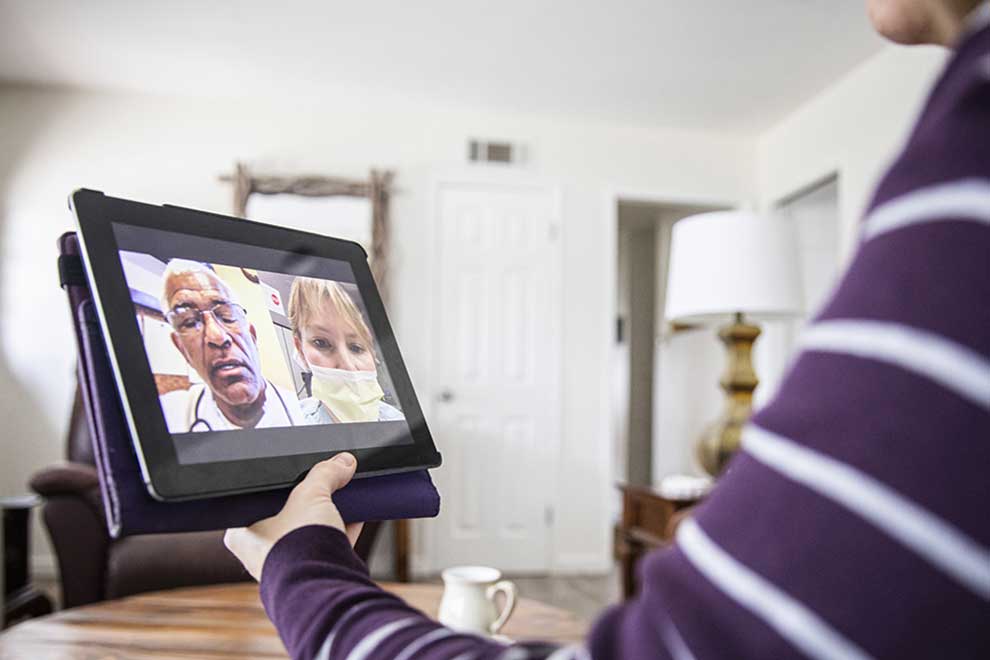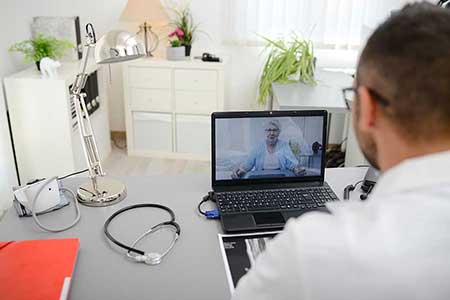
The COVID-19 crisis has propelled telehealth from a useful complement to a healthcare facility’s normal offerings to being a critical component of patient care and safety. While telehealth has already been increasing in popularity and demand across the country — due to its convenience, patient satisfaction, and time and cost savings — the need for telehealth services has become more urgent than ever as a way to reduce stress on both healthcare facilities and patients.
Telehealth and coronavirus
Expanding telehealth capabilities can help healthcare facilities address coronavirus-related concerns in several ways:
- Patients who have chronic illnesses or are otherwise vulnerable to COVID-19 can consult with physicians and be observed taking their own blood pressure or blood sugar readings without the risks of an office visit.
- Providers who are self-quarantined as a result of exposure to the novel coronavirus can continue to treat patients safely and effectively from their homes.
- Proactive outreach allows for prescreening of patients with upcoming appointments for symptoms of COVID-19.
- Physicians may opt to treat patients with mild symptoms remotely rather than risking exposure to others by having them come to a facility.
- Rural hospitals can quickly bring on additional providers to supplement their on-site staff.
Fewer barriers to implementing a telehealth program

Because of the surge in demand, many of the traditional barriers to implementing a telehealth program have been lifted either temporarily or permanently. For example, several states have waived or expedited licensing for out-of-state clinicians, which makes it easier to staff telehealth with locum tenens physicians, PAs, or NPs. Additionally, CMS will be temporarily paying clinicians for telehealth services for Medicare and Medicaid beneficiaries. Certain privacy restrictions have also been relaxed to ensure that doctors operating in good faith for the interest of their patients won’t fear the possibility of a HIPAA-related penalty.
Getting started with telehealth
For a healthcare facility interested in implementing a telehealth program, the first step is to consider how to properly outfit your facility and your providers with the technology and processes that make telehealth possible. A good telehealth vendor can help you understand and meet the necessary standards and requirements for data security, regulatory compliance, and billing purposes. For example, in order to get reimbursed by the Centers for Medicare and Medicaid Services, a telehealth visit must use both interactive audio and video between patient and provider. If you already have the necessary systems and technology infrastructure in place, implementing a telehealth program may be relatively easy using in-house resources. For others, it may be simpler to partner with a third-party vendor for telehealth delivery.
Even after the flood of COVID-19 cases ends, an infrastructure investment in a successful telehealth program will continue to pay dividends in efficiency and improved patient experience. The current crisis may be a good proving ground for new technologies that address the needs of your health system, and you’ll be better prepared for the future.
No matter what form your facility’s telehealth program takes, CHG can provide you with the doctors, nurses, and allied professionals you need to provide uninterrupted patient care. Contact us by phone at 866.588.5996 or email covid19@chghealthcare.com.